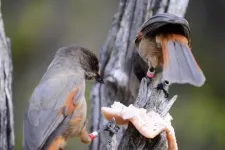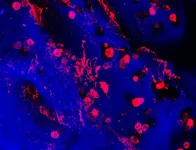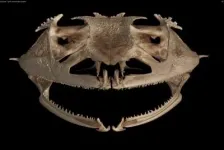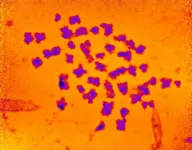How the major Swedish forest fire of 2014 affected the ecosystem
2021-06-01
(Press-News.org) Swedish researchers from institutions including Uppsala University have spent four years gathering data from the areas affected by the major forest fire of 2014. In their study of how the ecosystem as a whole has been altered, they could see that water quality in watercourses quickly returned to normal, while forested areas continued to lose carbon for many years after the fire.
The consequences of major forest fires remain poorly studied in Northern Europe. To improve this situation, researchers from Uppsala University, the Swedish University of Agricultural Sciences (SLU) and the Swedish Meteorological and Hydrological Institute (SMHI) decided to investigate just how much carbon and nutrients are released into the atmosphere and watercourses during fires and how quickly the ecosystem returns to its previous state. The results of this research are now being presented in the scientific journal Biogeosciences.
The 2014 fire in the Swedish province Västmanland was particularly ferocious, burning both woodland and wetland. Only in a few areas did the trees survive.
"It is not however the trees that release carbon during fires in coniferous forests. Only some of the needles and small branches up in the trees burn, while around 90% of losses come from organic soil, the so-called humus layer. Ditched peatlands that dry a great deal of organic material in the soil are therefore large point sources for emissions from the landscape. This makes it important to measure how deep the burning goes in the ground in order to estimate carbon emissions after a forest fire. We had the opportunity to do just that over a wide area in Västmanland," says Uppsala University researcher Gustaf Granath, lead author of the study.
The loss of the humus layer releases large amounts of carbon and nitrogen from woodland and risks other nutrients leaching out after the fire. It is therefore important that vegetation can quickly re-establish itself in the interests of retaining nutrients and restoring soil carbon.
The results from Västmanland demonstrate that during the fire between 145 and 160 tonnes of carbon dioxide was lost to the atmosphere per hectare. For the whole burned area this is equivalent to 10% of the carbon dioxide emitted annually by Sweden's domestic transport sector. Due to the lack of vegetation after the fire, the soil continued to lose carbon over the next few years, with a net uptake of carbon first noted during a summer month three years after the fire. Researchers were concerned that a great deal of carbon would be lost to watercourses after the fire but were unable to observe any such additional export of carbon into streams when comparing conditions before and after the fire.
Quantities of nutrients such as nitrogen and phosphorus did however increase in streams and lakes after the fire, reaching a peak within one to two months of the fire before declining over time. For many of these substances, in the region of five times as much was transported away during the first year after the fire compared to before; however, most values had returned to normal one to two years after the fire.
"This rapid leaching of nutrients after the fire is due to the lack of vegetation that could absorb the substances, as well as the large release of the substances during the fire as organic soil burned. Without living vegetation and organic soil, water flows in streams increased by 50%" explains Stephan Köhler, professor of environmental geochemistry at SLU, who initiated the measurement of water quality immediately after the fire.
Other studies have shown how vegetation in the area of forest fires has re-established itself and how carbon and nutrient stocks have been rebuilt. How quickly this happens and what parameters affect the process will influence whether or not Sweden's forests could become long-term sources of CO2 to the atmosphere, is something that the researchers intend to continue studying in the area.
"While we now know more about how much and where carbon and nutrients disappear in fires, what happens next is equally interesting. There is a great deal of carbon bound in dead trees that will soon begin to decompose, while at the same time the soil and vegetation will store new carbon and build up stocks of nitrogen. It's important to follow this if we are to understand how our forests are affected when they burn," says Gustaf Granath.
INFORMATION:
The study has been funded by the Swedish Agency for Marine and Water Management and Formas.
[Attachments] See images for this press release:
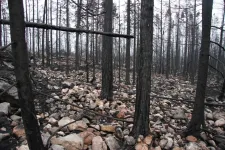
ELSE PRESS RELEASES FROM THIS DATE:
2021-06-01
Siberian jays are group living birds within the corvid family that employ a wide repertoire of calls to warn each other of predators. Sporadically, however, birds use one of these calls to trick their neighbouring conspecifics and gain access to their food. Researchers from the universities of Konstanz (Germany), Wageningen (Netherlands), and Zurich (Switzerland) have now examined how Siberian jays avoid being deceived by their neighbours. The study, published in the journal Science Advances, shows that these birds have great trust in the warning calls from members of their own group, but mainly ignore such ...
2021-06-01
News media reports about scientific failures that do not recognize the self-correcting nature of science can damage public perceptions of trust and confidence in scientific work, according to findings by researchers at the Annenberg Public Policy Center (APPC) of the University of Pennsylvania and the University at Buffalo, the State University of New York.
News stories about science follow several specific narratives, the researchers write in a new study in the journal Public Understanding of Science. One is that science is "in crisis" or "broken," a narrative driven in recent years by reports of unsuccessful efforts to replicate findings in ...
2021-06-01
A new miniature 3D model of human bone marrow has been described today in the open-access eLife journal.
The model may help clinicians predict which patients will benefit from a new therapy for blood platelet disorders, such as Inherited Thrombocytopenias - a group of familial disorders that inhibit the production of platelets. It could also enable further study of these disorders and give scientists a new tool to test experimental treatments.
Platelets are cells that are necessary for the blood to clot and stop bleeding. Having too few platelets can lead to internal or serious bleeding after surgery or injuries, which is usually treated with therapies that cause clotting. Recent studies have shown that a drug called Eltrombopag increases ...
2021-06-01
A college education is estimated to add $1 million to a person's lifetime earning potential, but for some students the path to earning one is riddled with obstacles. That journey is even more difficult for students who have been in the foster care system or experienced homelessness, according to a new study from the University of Georgia.
But the more college administrators and faculty know about these students' problems, the more they can do to ease the burden.
Getting into universities in the first place can frequently be a challenge for students who've had unstable home lives, said David Meyers, co-author of the study.
"Research tells us that every time a student moves from one foster care placement to another, they lose six months of educational ...
2021-06-01
In recent months, more than three hundred cases of salmonellosis have occurred in various European countries and Canada, which are linked to each other. In the UK the cases could be partly traced back to frozen breaded poultry meat. The cause was contamination with the bacterium Salmonella Enteritidis, which causes gastrointestinal inflammation. Salmonella is not killed by deep freezing and can remain infectious at temperatures below zero degrees Celsius. The Robert Koch Institute (RKI) and the BfR are monitoring the situation together with the Federal Office of Consumer Protection and Food Safety (BVL). In Germany, the number of reported cases has currently ...
2021-06-01
GAINESVILLE, Fla. --- Scientists have long known that frogs are oddballs when it comes to teeth. Some have tiny teeth on their upper jaws and the roof of their mouths while others sport fanglike structures. Some species are completely toothless. And only one frog, out of the more-than 7,000 species, has true teeth on both upper and lower jaws.
Now, the first comprehensive study of tooth evolution in frogs is bringing the group's dental history into focus. Florida Museum of Natural History researchers analyzed CT scans of nearly every living amphibian genus to reveal that frogs have lost teeth over 20 times during their evolution, more than any ...
2021-06-01
DANVILLE, Pa. - Among people who have strokes and COVID-19, there is a higher incidence of severe stroke as well as stroke in younger people, according to new data from a multinational study group on COVID-19 and stroke, led by a team of Geisinger researchers.
The COVID-19 Stroke Study Group's latest report, published in the journal END ...
2021-06-01
LAWRENCE -- In the early days of COVID-19 vaccine development, a new social media platform provided a place for like-minded people to discuss vaccines, share misinformation and speculate about the motivations for its development. A new study from the University of Kansas shows people flocked to Parler to discuss the vaccines in an echo chamber-type environment, and those conversations can shed light about how to communicate about vaccine efficacy during health crises.
COVID-19 vaccine vial and syringe photo from the U.S. Census Bureau.In the runup to the 2020 election, then-president Donald Trump claimed a COVID-19 vaccine could be ready before ...
2021-06-01
Mass of human chromosomes measured for the first time
The mass of human chromosomes, which contain the instructions for life in nearly every cell of our bodies, has been measured with X-rays for the first time in a new study led by UCL researchers.
For the study, published in Chromosome Research, researchers used a powerful X-ray beam at the UK's national synchrotron facility, Diamond Light Source, to determine the number of electrons in a spread of 46 chromosomes which they used to calculate mass.
They found that the chromosomes were about 20 times ...
2021-06-01
Scientists have revealed a potential mechanism for how traumatic brain injury leads to neurodegenerative diseases, according to a study in fruit flies, and rat and human brain tissue, published today in eLife.
The results could aid the development of treatments that halt the progression of cell damage after brain injury, which can otherwise lead to neurological diseases such as amyotrophic lateral sclerosis (ALS), and Alzheimer's and Parkinson's disease.
Repeated head trauma is linked to a progressive neurodegenerative syndrome called chronic ...
LAST 30 PRESS RELEASES:
[Press-News.org] How the major Swedish forest fire of 2014 affected the ecosystem

